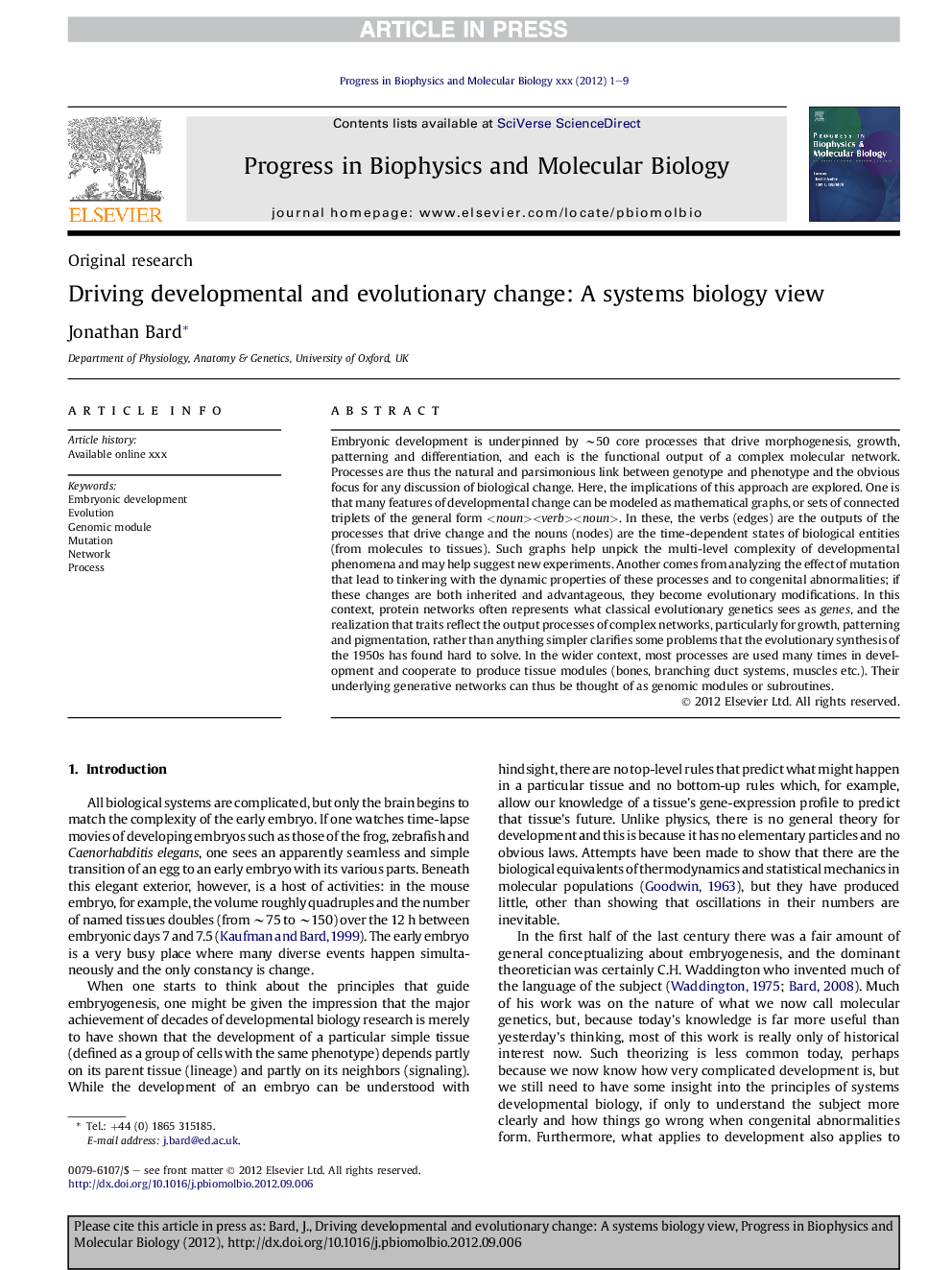| کد مقاله | کد نشریه | سال انتشار | مقاله انگلیسی | نسخه تمام متن |
|---|---|---|---|---|
| 8401230 | 1544483 | 2013 | 9 صفحه PDF | دانلود رایگان |
عنوان انگلیسی مقاله ISI
Driving developmental and evolutionary change: A systems biology view
ترجمه فارسی عنوان
رانندگی تغییرات تکاملی و تکاملی: منظر زیست شناسی سیستم
دانلود مقاله + سفارش ترجمه
دانلود مقاله ISI انگلیسی
رایگان برای ایرانیان
کلمات کلیدی
رشد جنین، سیر تکاملی، ماژول ژنومی، جهش، شبکه، روند،
موضوعات مرتبط
علوم زیستی و بیوفناوری
بیوشیمی، ژنتیک و زیست شناسی مولکولی
بیوفیزیک
چکیده انگلیسی
Embryonic development is underpinned by â¼50 core processes that drive morphogenesis, growth, patterning and differentiation, and each is the functional output of a complex molecular network. Processes are thus the natural and parsimonious link between genotype and phenotype and the obvious focus for any discussion of biological change. Here, the implications of this approach are explored. One is that many features of developmental change can be modeled as mathematical graphs, or sets of connected triplets of the general form . In these, the verbs (edges) are the outputs of the processes that drive change and the nouns (nodes) are the time-dependent states of biological entities (from molecules to tissues). Such graphs help unpick the multi-level complexity of developmental phenomena and may help suggest new experiments. Another comes from analyzing the effect of mutation that lead to tinkering with the dynamic properties of these processes and to congenital abnormalities; if these changes are both inherited and advantageous, they become evolutionary modifications. In this context, protein networks often represents what classical evolutionary genetics sees as genes, and the realization that traits reflect the output processes of complex networks, particularly for growth, patterning and pigmentation, rather than anything simpler clarifies some problems that the evolutionary synthesis of the 1950s has found hard to solve. In the wider context, most processes are used many times in development and cooperate to produce tissue modules (bones, branching duct systems, muscles etc.). Their underlying generative networks can thus be thought of as genomic modules or subroutines.
ناشر
Database: Elsevier - ScienceDirect (ساینس دایرکت)
Journal: Progress in Biophysics and Molecular Biology - Volume 111, Issues 2â3, April 2013, Pages 83-91
Journal: Progress in Biophysics and Molecular Biology - Volume 111, Issues 2â3, April 2013, Pages 83-91
نویسندگان
Jonathan Bard,
